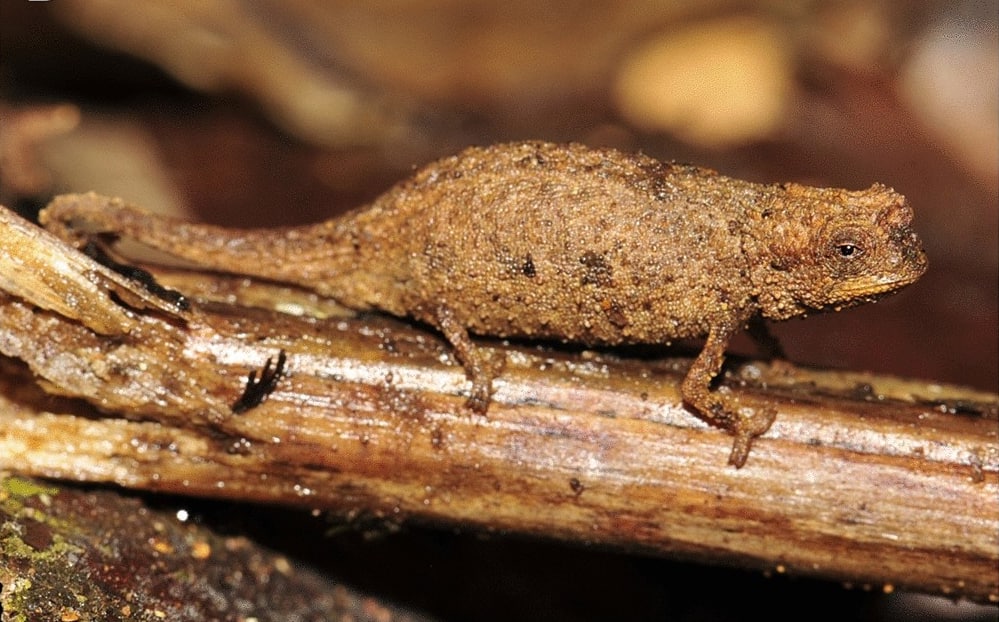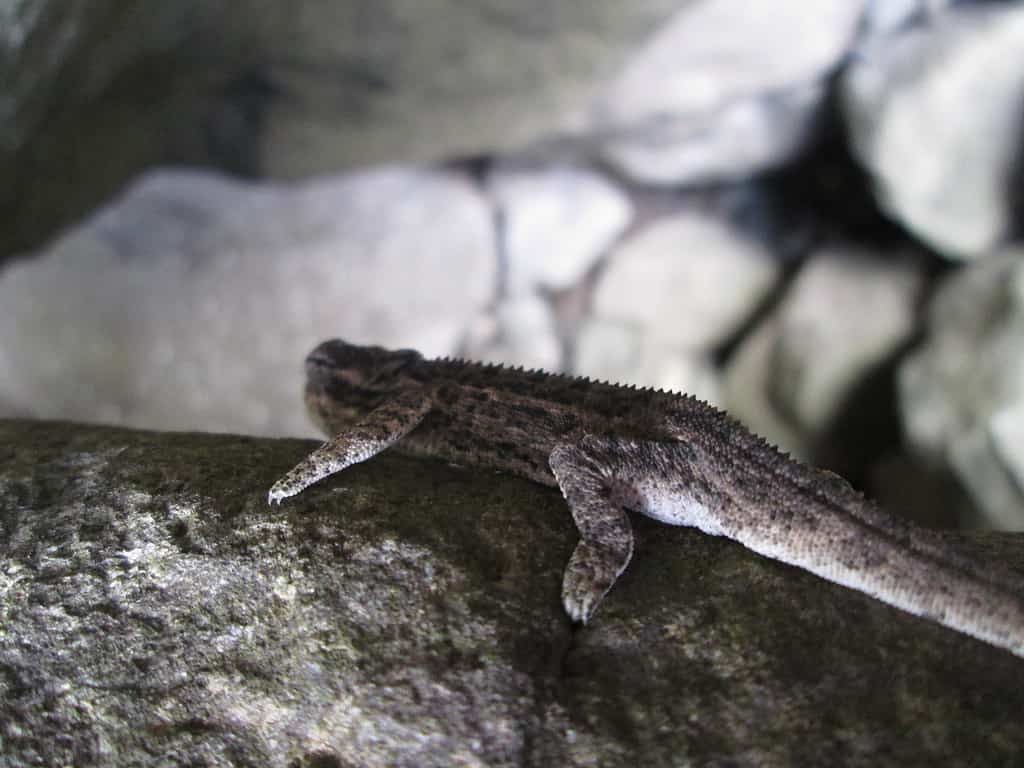Despite the fact that there isn’t that much distinction between male and female mature chameleons there is a perceptible contrast in size between the two. Because they are typically broader, adult males will usually appear significantly larger than females.
Males reach a length of up to 24 inches, while females average between 14 and 18 inches; The length of a female is on average just under 12 inches. But wait – there’s always an exception to the rule! Let us introduce you to the nano-chameleon!
What is a Nano-Chameleon?
The nano-chameleon, or Brookesia nana, is a minuscule chameleon discovered in the precipitous tropical jungle of North Madagascar, in a region known as the Sorata massif. They can fit on your finger and are slightly larger than a grain of rice!
It’s possible that the nano-chameleon is the world’s smallest reptile. Mites and springtails are their prey, which they snatch with their unique tongues because they are so small.

The nano-chameleon can fit on your finger and is slightly larger than a grain of rice.
©Frank Glaw, Jörn Köhler, Oliver Hawlitschek, Fanomezana M. Ratsoavina, Andolalao Rakotoarison, Mark D. Scherz & Miguel Vences, CC BY 4.0, via Wikimedia Commons – License
Discovery of the Nano-Chameleon
In 2021, a subspecies of chameleon that’s the length of a grain of rice may have been discovered, according to scientists. A German-Madagascan research group in Madagascar found two of the tiny lizards.
A male Brookesia nana, the technical name for nano-chameleons, has a half-an-inch-long body!
This makes the critter one of the smallest of the 11,500 types of reptiles, as per the Bavarian State Collection of Zoology in Munich. It measures roughly 0.86 inches from the top to the tail.
It was discovered by researchers that nano-chameleons hunt for mites on the ground of the dense forest and hide at night in grass blades to avoid predators. The Brookesia’s forest is very connected to other forests in the north of the island.
It was unknown whether these chameleons were fully mature due to a lack of prior information. After careful observation and a Micro CT scan that showed the male was sexually mature and the female was carrying eggs, the experts realized that the nano-chameleons were fully grown despite their small size.
The researchers do not know what caused the nano-chameleon to be so miniscule. The Brookesia micra, another wee chameleon, is fractionally larger than the nano.

It’s possible that the nano-chameleon, discovered in 2021, is the world’s smallest reptile.
©Frank Glaw, Jörn Köhler, Oliver Hawlitschek, Fanomezana M. Ratsoavina, Andolalao Rakotoarison, Mark D. Scherz & Miguel Vences, CC BY 4.0, via Wikimedia Commons – License
Are Chameleons Endangered?
According to a study, there are five critically endangered species of chameleons in the forests of mainland Africa. All of these species are threatened by forest loss. While some chameleon species, like the Drakensberg dwarf chameleon, are endangered, others, like the tiger chameleon, are not.
The nano-chameleon is said to be endangered due to a lack of found populations.

There are five critically endangered species of chameleons in the forests of mainland
Africa
, including the Drakensberg dwarf chameleon.
©Nolan Exe, CC BY 4.0 via Wikimedia Commons – License
Known Facts About Nano-Chameleons
Because the species was recently discovered, there isn’t too much information about these wee creatures just yet. The nano-chameleon is, as far as we are aware, blotchy brown in color.
The majority of Brookesia species’ females are larger than their male counterparts. The purpose behind its modest size are at present obscure, as many vertebrates develop as they mature. It is thought that habitat loss led to the development of miniaturism.
It looks as if these creatures can survive about 10 years, though research is still being conducted. Our readers can look forward to more content regarding nano-chameleons as more information comes forward!
The photo featured at the top of this post is © Frank Glaw, Jörn Köhler, Oliver Hawlitschek, Fanomezana M. Ratsoavina, Andolalao Rakotoarison, Mark D. Scherz & Miguel Vences / Creative Commons – License / Original
Thank you for reading! Have some feedback for us? Contact the AZ Animals editorial team.






